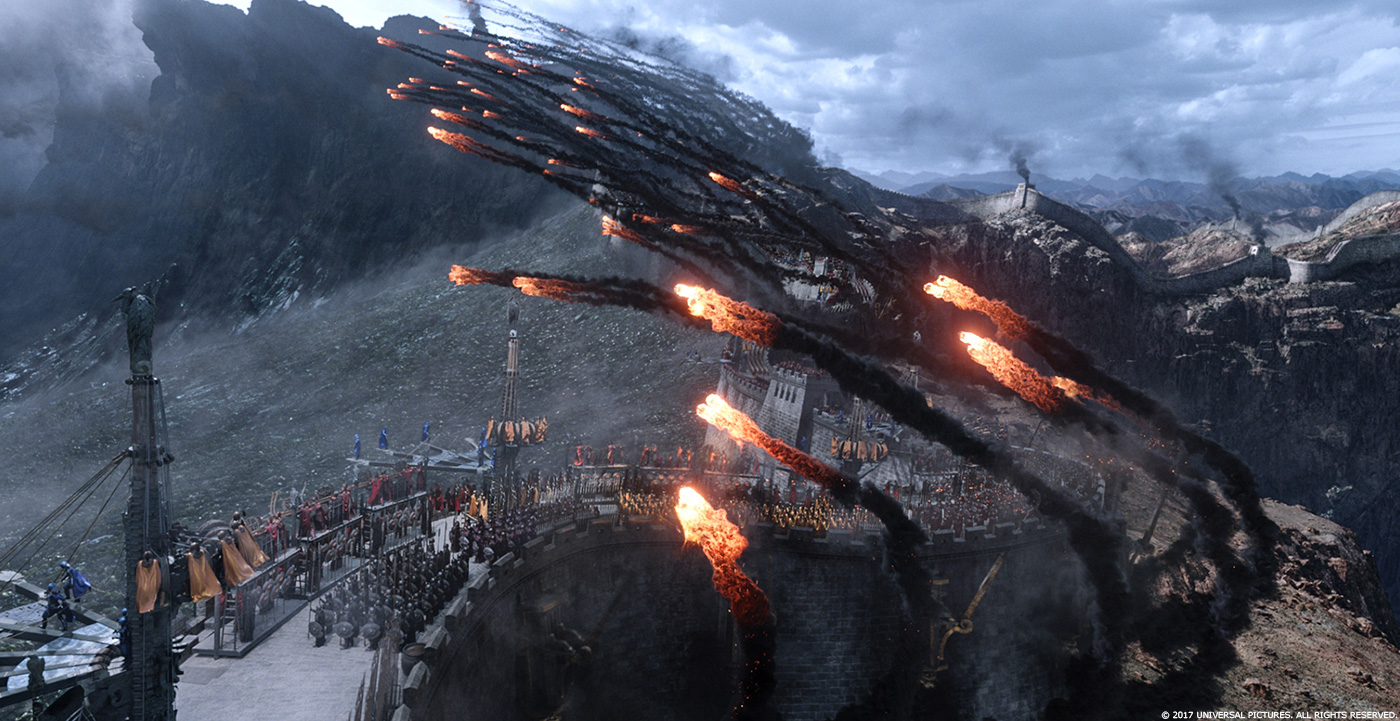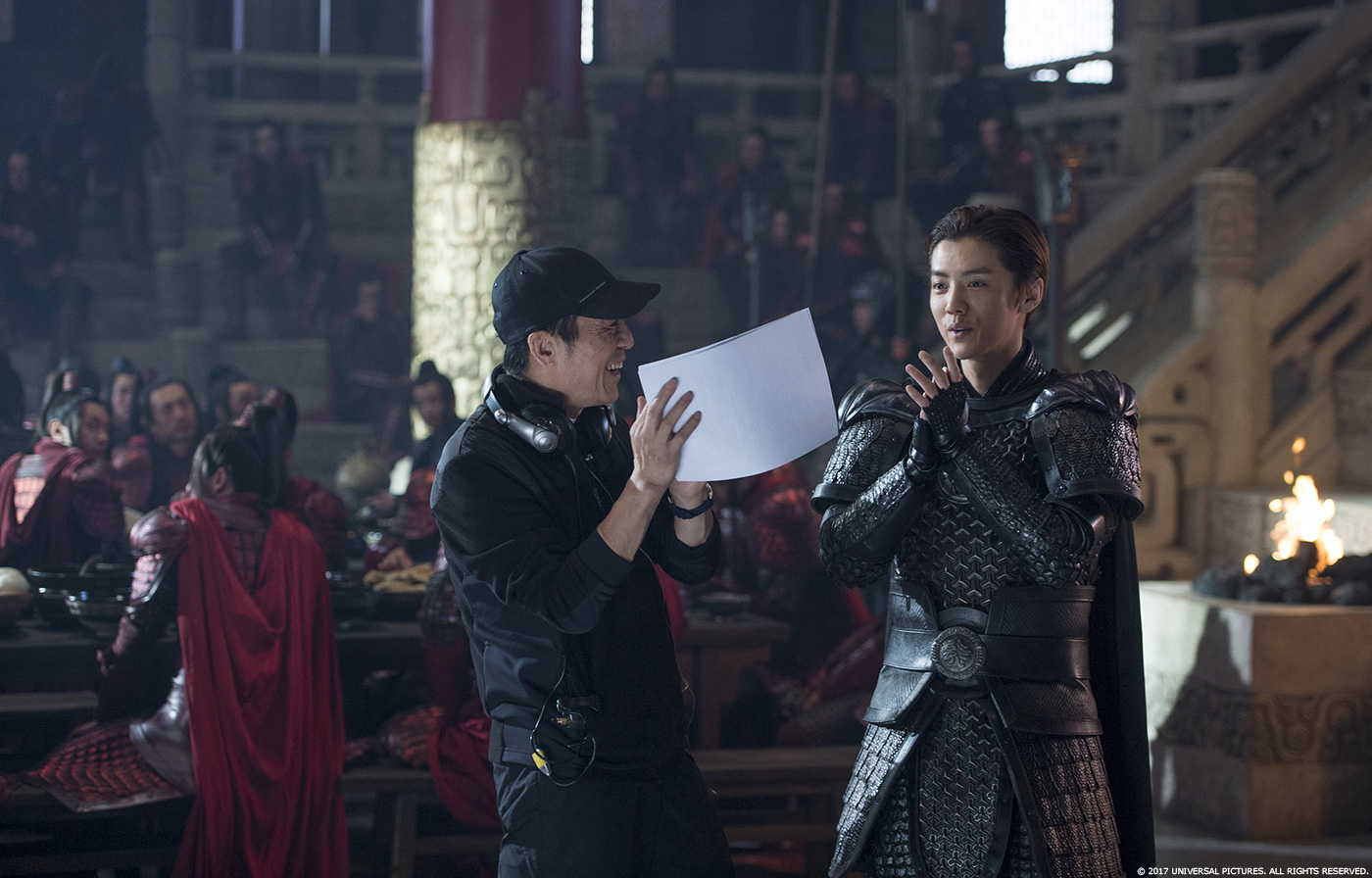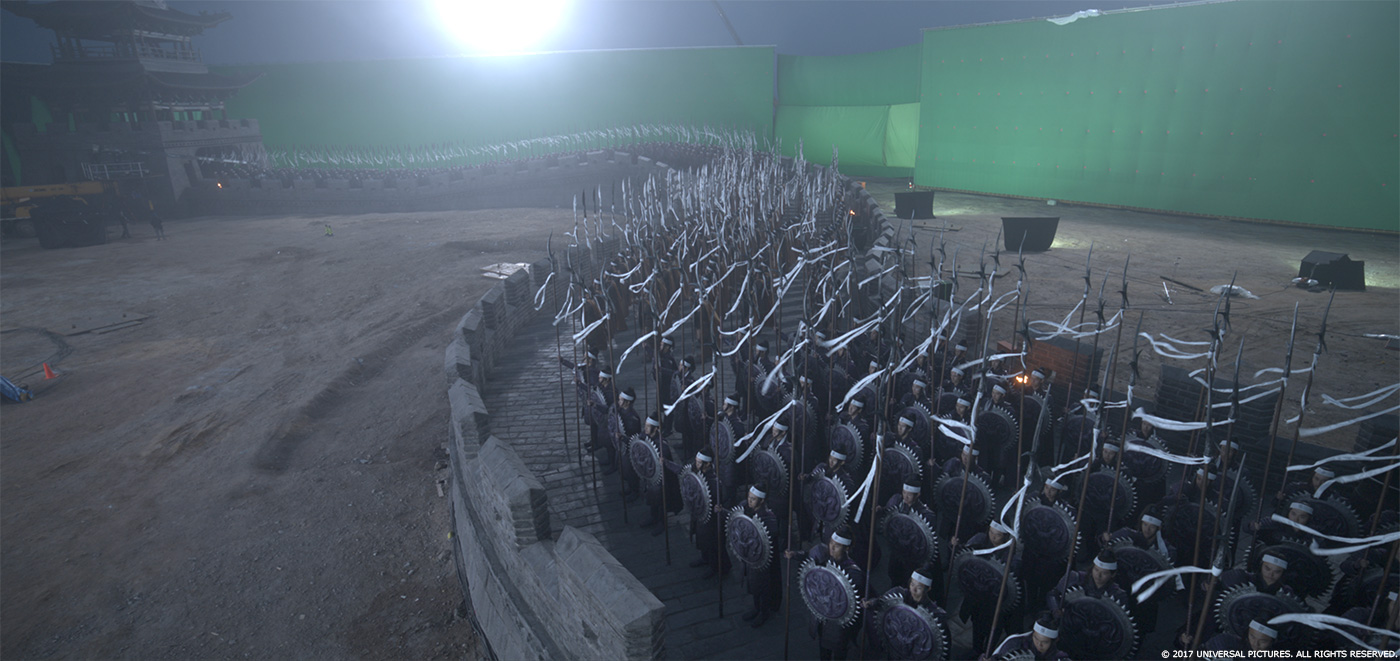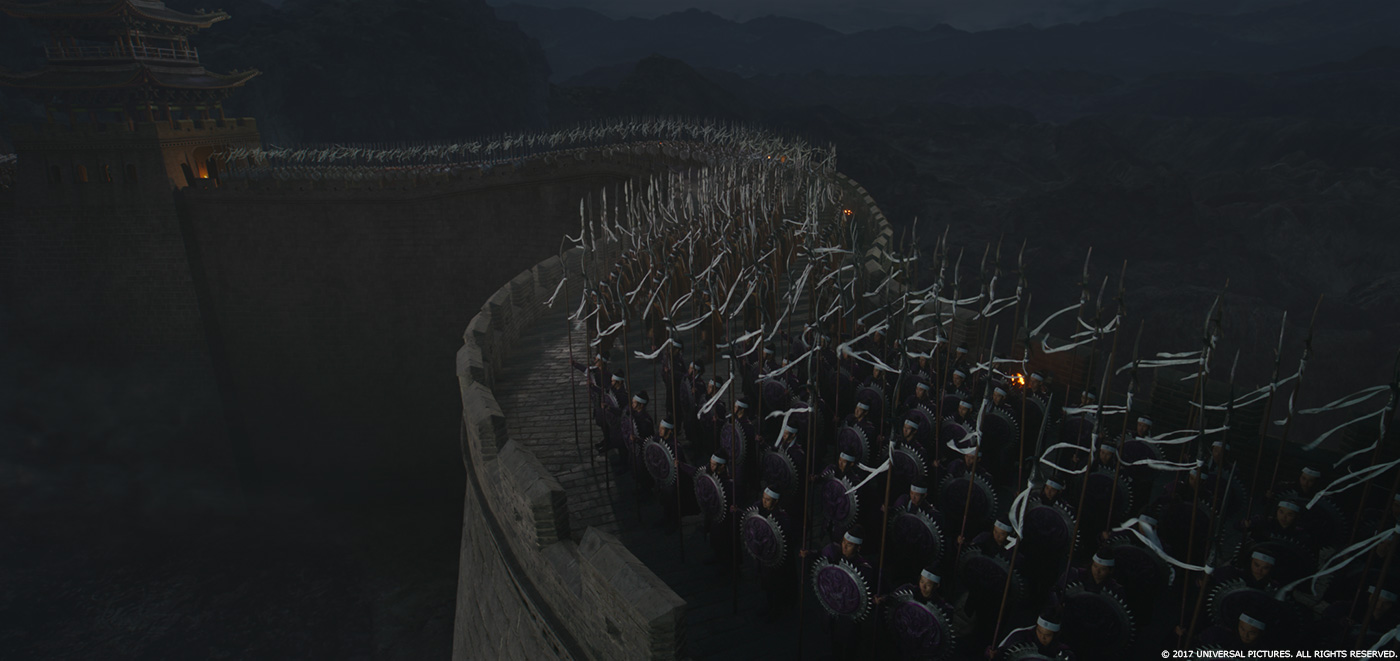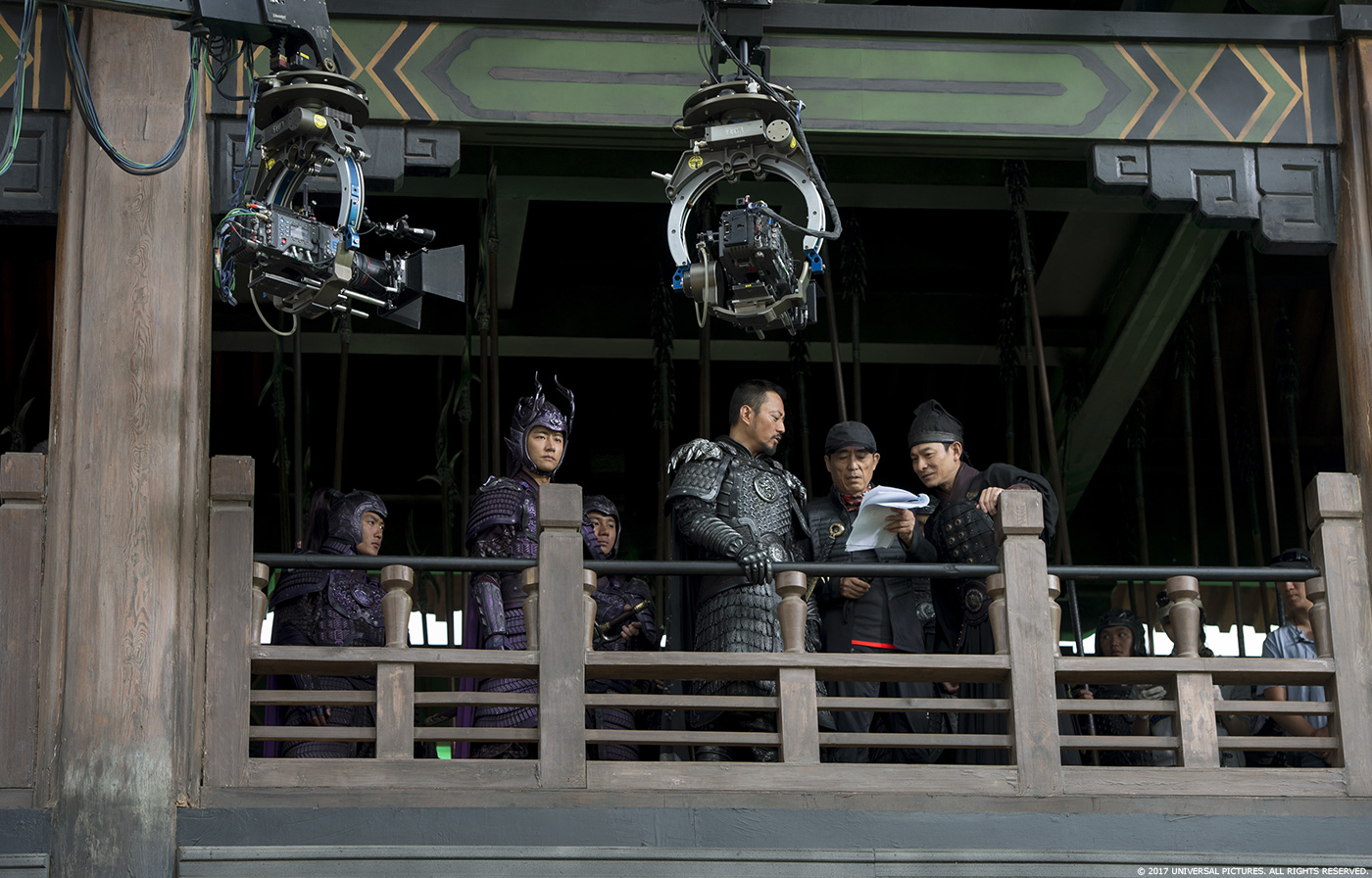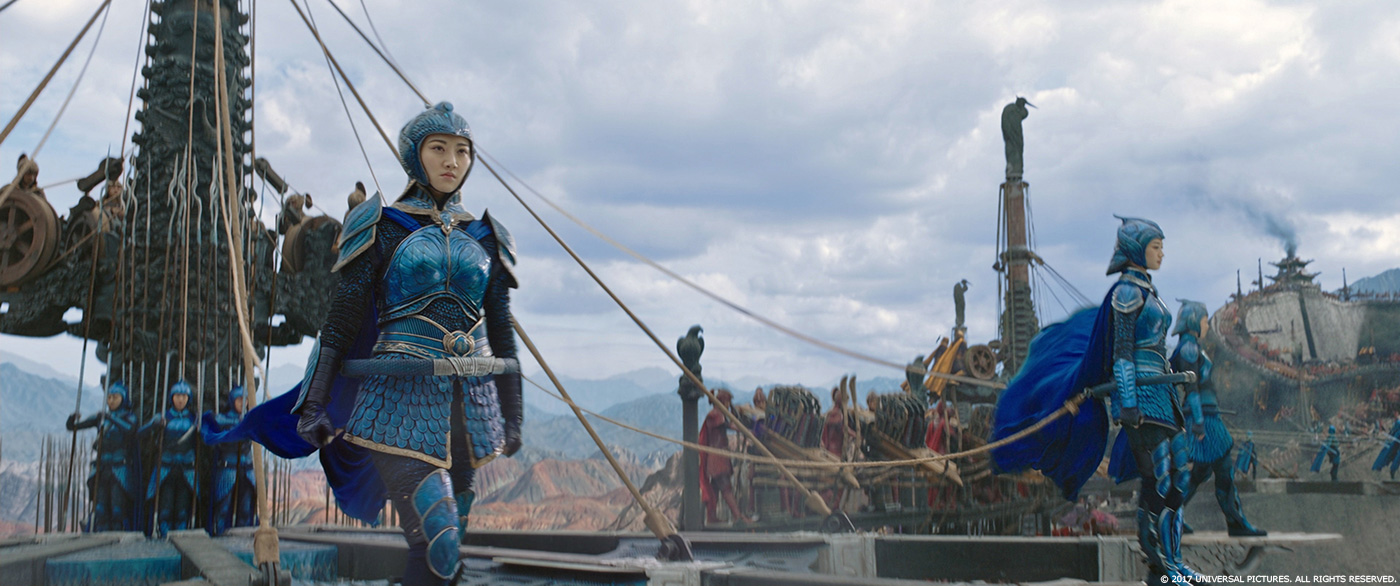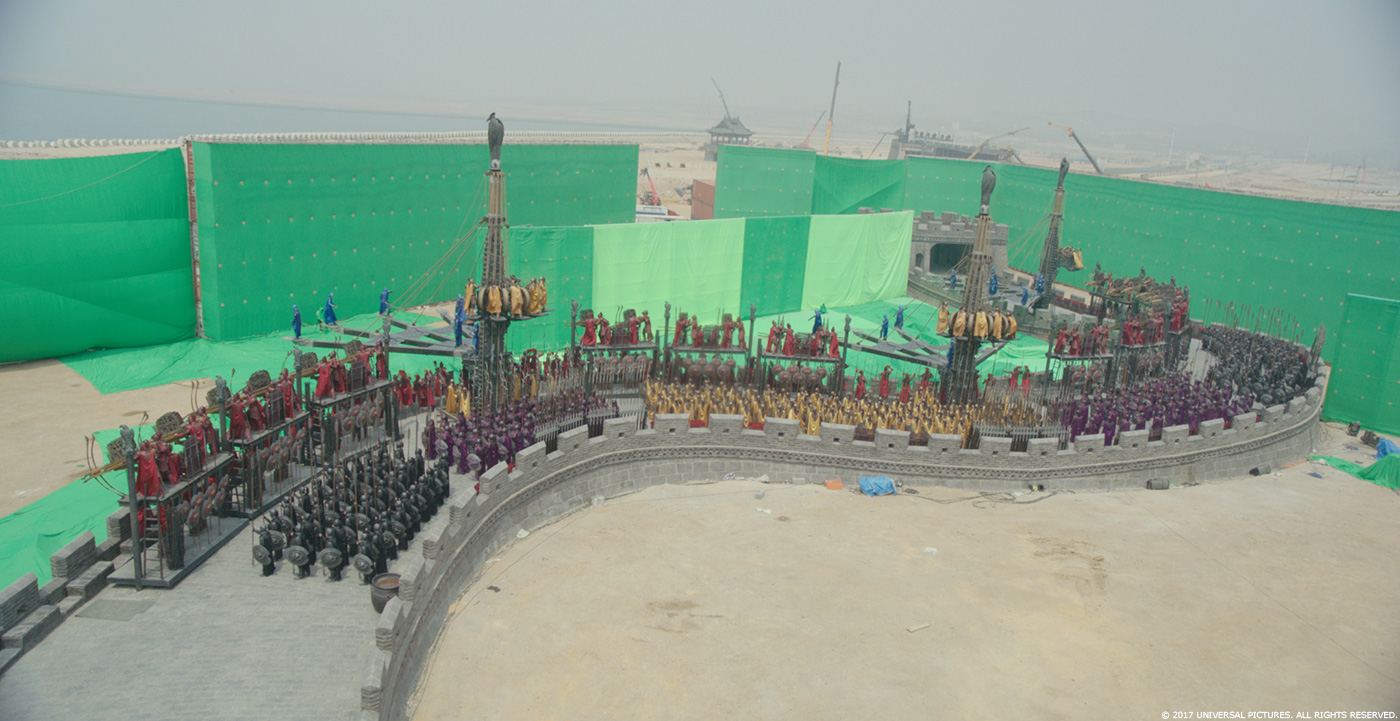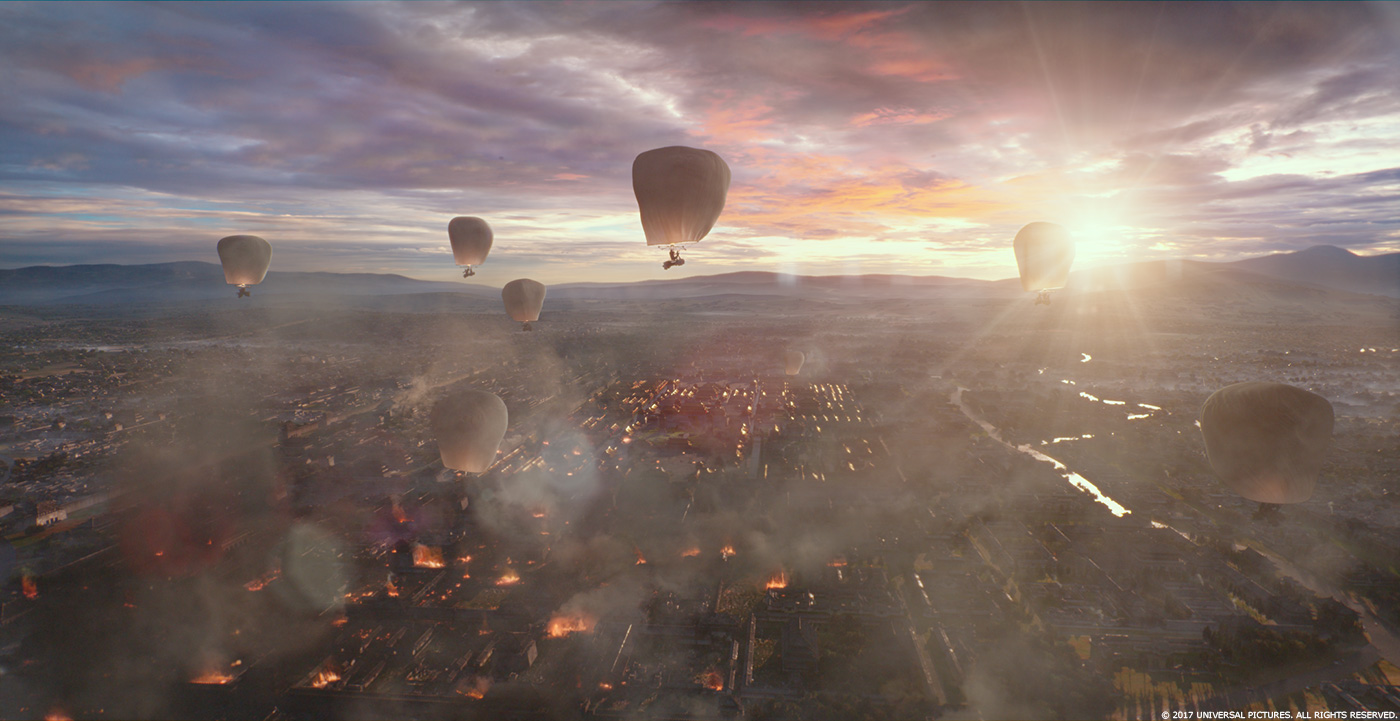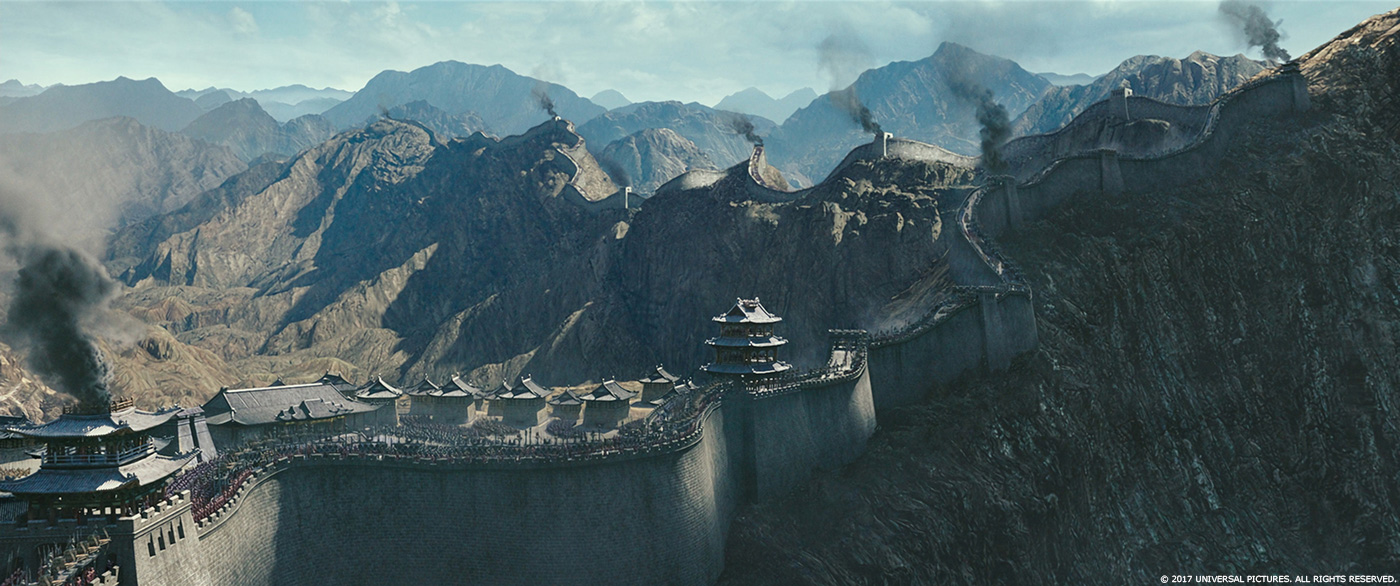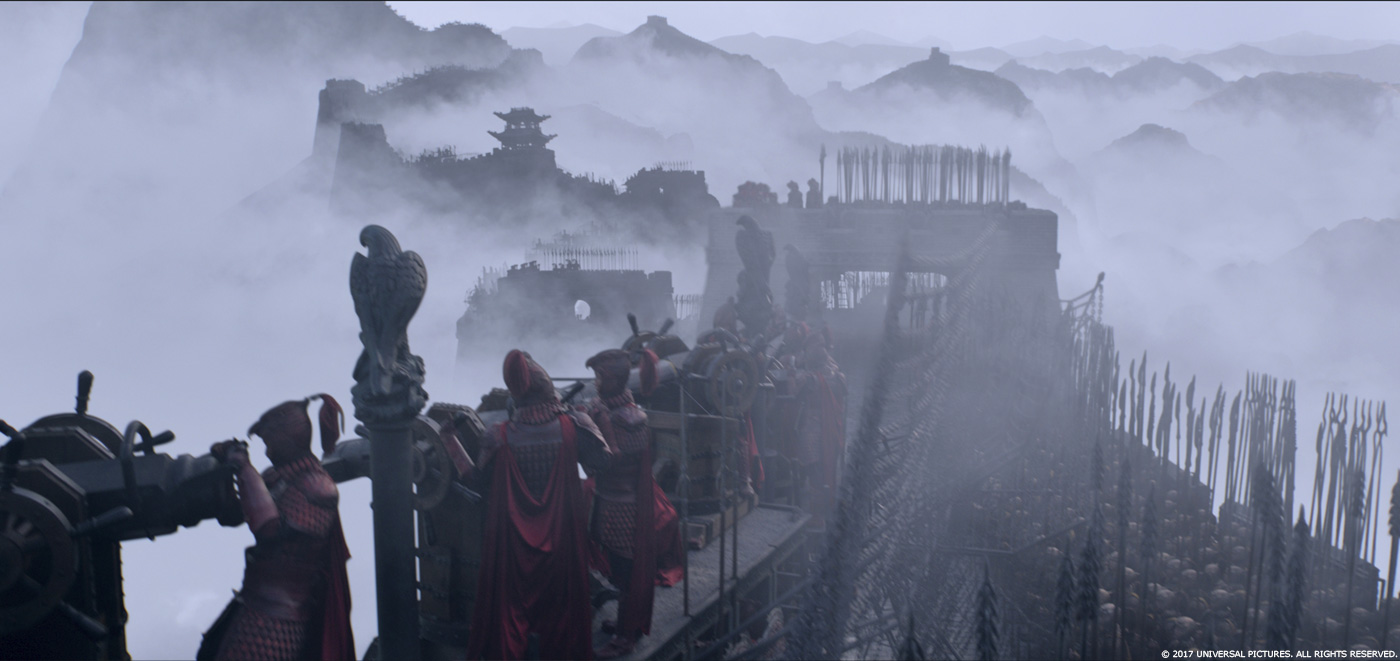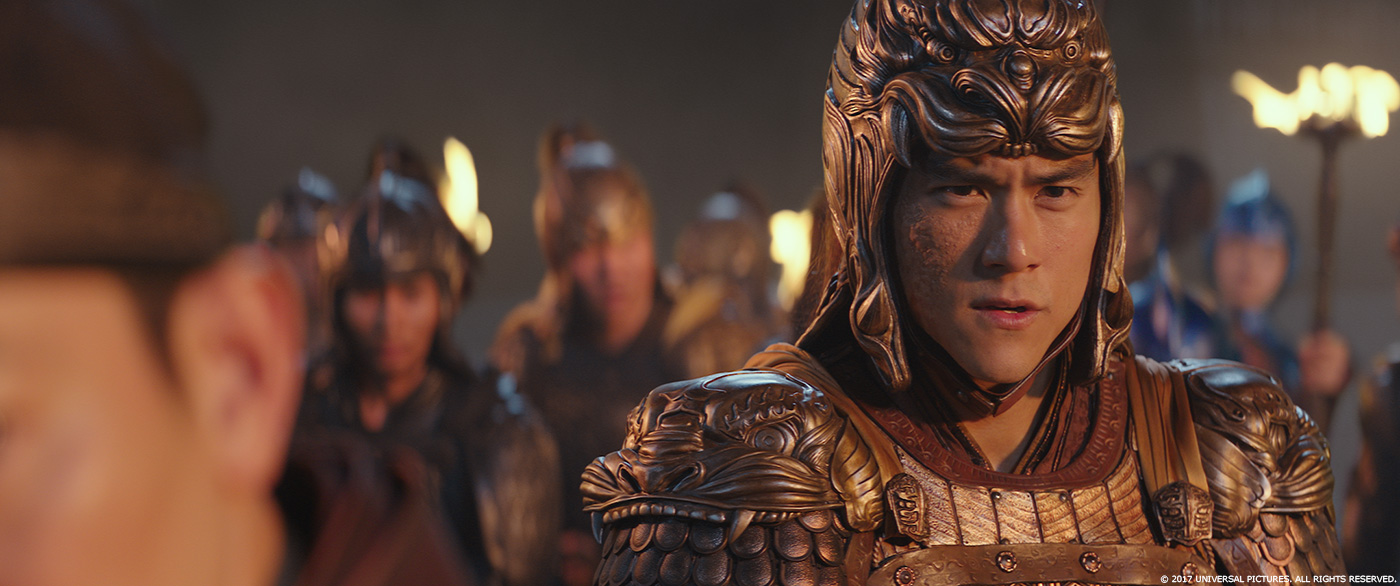Samir Hoon began his career in VFX at R/Greenberg Associates in 1993. He joined Industrial Light & Magic in 1995. He has worked on numerous projects such as TERMINATOR 3: RISE OF THE MACHINES, ERAGON, STAR TREK INTO DARKNESS or HITMAN: AGENT 47.
What is your background?
After graduating from Sheridan College, Toronto, I worked at RGA, New York for couple of years before joining ILM in 1995, as a TD.
How did you and ILM get involved on this show?
ILM was contacted by Legendary in early 2014 regarding the project and I met Zhang Yimou at Legendary Studios, in LA, later that year. This followed rounds of bidding and conversations around methodology given the extent of VFX work in the movie.
How was the collaboration with director Zhang Yimou and the studio-side VFX Supervisor Phil Brennan?
Zhang Yimou is incredibly visual and creative. It was an honor to work with him, he loves epic scale and saturated colors. Since he is most comfortable conversing in Mandarin, all conversations went through his translator but often, his animated style needed no translation. Earning his trust and helping him realize his vision was our goal. After principal photography wrapped in China, director Zhang Yimou and Phil Brennan were based in LA for post. Being 15 hours ahead in Singapore, we would send material our end of day and have daily reviews the following mornings with Phil, who, would have reviewed the shots with Zhang and gotten his feedback. Overall, the process was very collaborative and both Phil and Zhang were always open to ideas and suggestions.
What was their approach to the visual effects?
Zhang was clear he was making a fantasy film with monsters and heroes, a Chinese legend set in a world filled with elements of old Chinese culture, surrounded by elite warriors, beautiful landscapes and bloodthirsty monsters. Lots of them. Most action sequences were pre and postviz’d by The Third Floor to help support the shoot, the story and editorial cut.
Our main « Wall » set, named « low wall », was built on the Wanda Studios backlot in Qingdao and was a 100 meter section of the top part of the wall. Around the Wall set we had shipping containers stacked 3 high, onto which green screen was draped. There were also 5-6 heavy excavators with 30×20 foot green screens that could be driven and moved around to help cover areas. It was an all outdoors, massive green screen setup and we faced all the challenges of being exposed to the the elements, one would expect. The Wall set, could fit about 500 extras in costume and it was usually when the cameras went up, we’d realize, we needed more green screen on the ground or objects like crane arms with lights, were visible in frame between actors and the container green screen. If Phil and I felt we needed to fix it, we’d discuss with Stuart Dryburgh (DP) and ZY and get it sorted. We kept our footprint to a minimal but also tried to make sure we got what we needed. The entire crew on set was great and very co-operative knowing what a challenging job lay ahead for VFX.
How did you organize the work amongst the ILM offices and vendors?
We split the work based on types of shots across the various sequences between ILM Singapore and our vendor partners. ILM Singapore did most of shots involving Tao Tei animation and creature crowd work. We established the Wall and the « environment look » and shared these massive assets with BaseFX in Beijing, supervised by Jay Mehta and Hybride in Montreal, supervised by Joseph Kasparian. Animal Logic, supervised by Andy Brown, helped out with balloon shots over the city of Bianliang and ILM San Francisco, supervised by Hayden Landis, helped with shots approaching Bianliang. Ghost, supervised by Jacob Borsting, also helped with shots in the balloon takeoff sequence.
Ben Snow and I split the Singapore work, and Ben also supervised BaseFX while I managed the work from Animal Logic, Hybride, ILM San Francisco and Ghost. Whilst I was on-set for 5-months, Jeff Capagreco, VFX Supervisor, helped with asset development and set the foundations with BaseFX, Hybride & Ghost.
Can you describe a typical day during shooting and during the post?
Typically, we’d get in before crew call, look over the set for markers or green screen repairs, go over the scenes for the day, with our on set VFX team and ready our equipment. Zhang Yimou would arrive at call time, walk the set, go over the plan with the AD, DP, camera dept, Stunts, SFX, VFX etc. and off we’d go. At the end of the day, the HOD’s along with Zhang Yimou would stay back and go over the next day’s shoot schedule, review any pre-viz and plan and discuss each dept’s needs.
When two units were shooting, Phil and I split up and I went with George Ruge, second unit director, to the province of Gansu to shoot the opening sequences of the movie. The location, was a 2.5 hour drive, each way, followed by a 10-12 hour shoot day in the hot, dusty desert environment, so the days were long but the locations at Zhangye Danxia and Yadan geological park were spectacular.
During post, a large part of the time was spent reviewing work dark review rooms. We’d start with cineSync with LA in the morning, followed by internal shot reviews throughout the day, followed by reviews with BaseFX, Animal Logic and Ghost in early evening and ending with Hybride later in the evening.
The shooting team was mainly Chinese. Does that affects your way of working?
Most of the HOD crew was international with Chinese counterparts. Since most of the communication happened via translators, we had to make sure we were very specific and detailed with our requests. We would typically be shooting with some 500-odd extras plus the entire crew, so the footprint of humanity on set tended to be large and managing and coordinating all this took effort on the part of the AD’s. Clear, concise and precise communication was key. The crew on the film had great camaraderie and were very collaborative. It was a fun crew.
Can you explain in detail about the creation of the Great Wall and the huge environment around it?
Going into the project, we knew almost every shot of the Wall would require extension work for the Wall, the environment around it and the soldiers on the wall. It required us to build 4km of the wall and a 360 view of it’s surrounding environment. The Wall, itself a defense mechanism with weapons, required working trebuchets firing fireballs, crane rigs, archers nest, scissor blades and soldiers, as part of the asset.
Production designer John Myhre and his team built two « Great Wall » set pieces on the backlot in Qingdao. The « low wall » with a tower, was 100 meters long by 4 meter high, curved section for the top of the wall and was used for most of the shoot. It allowed us to shoot principal actors along with 500 extras soldiers and extend and replace the wall and the environment around it. The other, known as the « high wall » was a 20 metres high by 25 metres section and was used to shoot a lot of stunt action. It was also our best reference.
A LiDAR scan of the practical set build along with hires textures by Plowman Craven, was used by the modelers and texture artists to build the Wall and its weapons. Since our shots ranged from extreme close up to aerial wides, the Asset was built at multiple resolutions supported with diffuse, spec, weathering, dirt, blood, scratches and displacement maps. The Wall was built in sections that fit together as a « nested asset » within our software with LOD for model and texture maps ranging from 16K to 2K to allow us to get close to the Wall. We also treated the crowd of soldiers on the Wall as part of this asset and using a placement tool in our software Zeno, vignettes of action of the armies were included as part of the asset.
The world around the wall was initially based on a real location of Mt. Wangmang, in Linchuan county within Shanxi province in China. Early on in production, we did an aerial photogrammetry scan of the area in China and built a 4 km long blocking version of the wall and the world around from the photogrammetry scan. Barry Williams, environment supervisor in SF, blocked and modeled in the 2 km wide and 8 km long meteor valley section and Lubo Hristov, art director then fleshed out the views as 3D concepts. The valley, the Tao Tei come from was dark, barren and foreboding while the world around and behind the wall was meant to be lush and green. During post, this changed from a lush green vegetation look to a more arid and barren look to support the story. This required a big change to the asset behind the wall and the environment team led by Dan Wheaton, who did an amazing job of adding detail, textures and shading to achieve the look. Using aerial plates and references shot on location and GPS coordinates, they were able to access DEM data and using terrain generation software, were able to create the look Zhang Yimou was after.
The final sequence takes place in the capital, Bianliang. How did you recreate this vast city?
Building Bianling was quite a challenge given the scale and complexity of the set. The city is roughly 8KM by 7KM. Barry Williams built a previs model and used aerial cameras for size and layout buyoff. There are three main sections for the city: the Palace, The City, and The Outskirts. The Palace, was a combination of the layout of the Forbidden City and the core area provided by the Production Design team. This was the rich part of the city with massive structures, from pagodas, to pavilions and great courtyards to the beautiful grand gates that provide access. Generalist lead, Alex Popescu and the generalist team laid out the city based on old Beijing street patterns and the buildings were mostly scattered using a smart system of rules to provide a natural look. The outskirts of BianLiang, consisted of villages and farmlands that were also based on a scattering system. For the look and feel of the different areas, we based our work on extensive photo references and used them for photogrammetry, to help with the modeling, and also for texture work. The asset team led by Panya Souvanna, modeled and textured each building and the generalist team assembled, lit and rendered them.Being the final act of the film, we knew the sequences needed dramatic lighting, so we came up with ideas to make the blend between plates and CG as interesting as possible. We played a lot of the overcast plate photography as being in shadow, giving us the opportunity to introduce accent of raking light, making the sequences look like early morning. We also played up the smoke and dust in the air, to really make it feel like a massive army invaded the city.
What kind of references and indications did you receive for this city?
John Myhre and his art team had pulled together a wonderful photo reference document with the architecture style and designs influences across China. We went over the references with Zhang Yimou. He didn’t want to replicate Forbidden City but to use it as a layout guide but follow architectural and color details from the Song dynasty period. He was looking for orange/yellow rooftops with blue trims and bright red facades with ornate, colorful designs. A photo shoot was planned and Alex Popescu spent two weeks in Beijing, Kaifeng and Wuxi going to different locations to photograph reference material, relevant to the Song dynasty period.
Can you tell us more about how you handle the crowd creation?
We had a lot of crowd shots in this film. From biped soldiers on the wall fighting to crowds of quadruped creatures blanketing the terrain. In the first act, the creatures are charging and climbing the wall but in the third act, Zhang Yimou wanted them to move in specific formations and form patterns while feeding the Queen. To achieve the horde of thousands of Tao Tei’s, crowd supervisor Takashi Yoshida and his team used commercial packages with our proprietary pipeline, to design quadruped crowd behaviour that would allow us to have them run, stop, avoid, climb on each other to scale the wall, communicate and die when struck by an arrow in the eye. The animation team generated cycles to support the motion required. Our pipeline, allowed our artists to move data from commercial packages into Zeno or Houdini to emit dust, ragdoll simulations and react to arrows, explosions and terrain.
Climbing on top of each other proved to be easier than getting off and required some clever logic to accomplish this. If the Tao Tei does not have anyone in front of it and whichever side of the Tao Tei was clear, the Tao Tei would move in that direction and jump down procedurally, transition into the run along a flow field and avoid obstacles.
How did you manage their animation and actions?
For the quadruped creatures Animation Supervisor Jance Rubinchik and his team worked very closely with Tak and the crowd team to provide them with animated action clips to design crowd behaviour in Massive that would allow us to have them run, stop, avoid, die, climb upward on each other while adapting to the terrain or piles of Tao Tei underneath them. A similar approach was taken for the soldiers by the crowd team but their motion was driven by mocap performance of stunts actors shot at Profile studios in LA.
Let’s talk about the creatures, the Tao Tie. How did you approach their design?
Zhang Yimou and the studio had already settled on the concept design of the creatures from Weta Workshop by the time we got involved with the project. We had to build and bring them to life and made some adjustments along the way but stayed true to the original design.
Can you explain in detail about their creation?
We received a concept design and model from production as our starting off point. Being mythical creatures, we found no additional references to guide us. It has a thick, bulky chest and small hips with the eyes on the shoulders and a large mouth full of teeth; it resembles a hyena in it’s stance but has limbs similar to a cheetah. Our art department helped in detailing out areas and we referenced hippo’s and rhino’s for skin textures and jade for skin color. Michal Kriukow, modeled the creature in zBrush and Adam Walker textured the Tao Tei with multiple variations, working closely with lookdev lead Nihal Friedel.
Can you tell us more about their rigging and their animation?
The Tao Tei’s unique design was definitely a creative challenge for animation and rigging teams. It has a thick, bulky chest and small hips with the eyes on the shoulders. Jance Rubinchik, our animation supervisor, used reference from various animals for movement and animated it with different run cycles and eventually we settled on a more conventional cheetah-like run. To illustrate for the audience how strong and powerful a single Tao Tei was, and how difficult it will be for the human army to take down this creature, the animation team choreographed the action for the Tao Tei to showcase the violent and maniacal nature of the creatures while still maintaining the weight of a heavy quadrupedal creature.
Lyon Liew, our creature lead, and his team built a muscle rig over the bone structure to allow for skin to slide and react to the underlying muscles during movement, as part of the skin simulation.
Did you receive specific indications from director Zhang Yimou for the Tao Tei?
Zhang Yimou was very particular about the Tao Tei design and look. He wanted it to move and behave like nothing seen before. Influenced by its mythological origins, it had to have Jade influenced green skin with a raised exoskeletal pattern on its forehead. The green skin needed to have a subtle sheen and scatter to it, while maintaining the sense of hide like toughness to it.
How did you create the Queen and her escort?
Both the Queen and the Paladins (her guards) were also designed by Weta workshop and we received concept art from production.
Again, our talented art department in San Francisco made some subtle changes to the Queen’s face, to help anthropomorphize her reactions and tweaked the anatomy to better support the animation poses. Model supervisor Steve Jubinville, modeled and detailed the queen in zBrush and texture artist, Kiki Teo painted her with Nihal supporting the lookdev.
For the Paladin’s, we needed to figure out a way to create a gorilla sized creature that had a thick skin shield extend out from it’s head and forearms to protect the queen. The director wanted the shield to be based on bat wings with a thick elephant skin feel. Designing a creature to look like a mix of gorilla, bat, with dinosaur scale details, was a really interesting mix, one that Steve Jubenville and Adam Walker relished.
The shield had a translucent embossed pattern in them and our CG supervisor, Jordi Cardus, and Nihal came up with a neat, iridescence look during shading to help with readability that Zhang Yimou was after. Like the Tao Tei’s, the Queen and the Paladins were also Jade influenced green colored with the continued theme of exoskeletal patterns on their foreheads.
What was the main challenges and how did you achieve it?
For the wide shots we faced a number of similar challenges. The enormity of the Bianliang environment, the ‘Wall with the terrain’ and ‘the valley’ the Tao Tei are running up, meant that there was a huge amount of space to fill with green creatures, smoke, dust, explosions and fires. The FX team led by Nico Delbecq did an amazing job of generating hundreds of fireballs, explosions, fires and atmospheric smoke and dust. They partnered with the composting team led by Tony Cole and Karim Sahai to create layers of complexity Zhang Yimou was after. Since most of the action sequences were shot with minimal smoke, the compositing team did an exceptional job by adding layers of smoke, fire, dirt and grittiness into shots and attenuated the lighting accordingly.
Was there a shot or a sequence that prevented you from sleep?
All of it! This was a film where more was better. With 80% of the film touched by VFX and great deal of creature, environment and FX work, we found ourselves constantly straddling a fine line between realism and fantasy.
What do you keep from this experience?
We had a great crew and it was a real privilege to work with all the talented people on this show. To have access to people smarter and more talented than me for guidance is a privilege and makes ILM a special place.
How long have you worked on this show?
A little over 2 years. August 2014 to October 2016.
How many shots have you done?
Our total shot count was around 1087 shots, which included some omits. ILM Singapore did 356 shots, BaseFX did 452 shots, ILM SF did 34 shots, Hybride did 154 shots, Animal Logic did 59 shots and Ghost did 32 shots. Our wonderful production team, led by Danielle Immerman and Cabral Rock, kept things moving across all the facilities and time zones.
What was the size of your team?
ILM Singapore peaked at 250 artists and altogether with vendor partners probably closer to 750.
What is your next project?
Can’t say just yet.
What are the four movies that gave you the passion for cinema?
This is a tough one and there are more than just four but BLADE RUNNER, ALIEN, STAR WARS EPISODE IV and THE SHAWSHANK REDEMPTION would top that list. The water pseudo-pod in THE ABYSS, inspired me to pursue CG as a career.
A big thanks for your time.
// WANT TO KNOW MORE?
– Industrial Light & Magic: Dedicated page about THE GREAT WALL on ILM website.
© Vincent Frei – The Art of VFX – 2017

